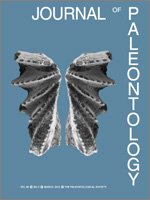Fossil echinoderms are a rich source of information concerning biotic interactions. In this study we analyzed the premortem encrustation of the highly specialized Middle Devonian rugose corals Aspasmophyllum crinophilum and ?“Adradosia” sp. on camerate crinoid stems. Aspasmophyllum infested living crinoid stems by sclerenchymal outgrowth that formed a skeletal ring but ?“Adradosia” sp. encrusted the stems rapidly, without building a ring. These coral-crinoid biocoenoses indicate a settlement advantage for the rugose corals within densely populated communities of the lower Givetian. The corals could be interpreted as large epizoozoans that benefited as secondary tierers reaching relatively high tiering levels. It also suggests the ability for the affected crinoids to repel the coral by overgrowing the corallite with a local increased stereomic growth. Because the crinoid axial canals are not penetrated, the corals cannot be considered as predators or parasites of crinoids. Therefore, the described biocoenosis is interpreted as commensalism. The species A. crinophilum is redescribed, and a neotype is defined, because of the loss of the initial types. Two types of ichnofossils can be attributed to the premortem encrustation of both corals. They are described as Ostiocavichnus n. ichnogen. and are attributed to the stereomic response of the infested hosts. These swellings are characterized as either elliptical (Ostiocavichnus ovalis n. ichnogen. n. ichnosp. due to the assumed reaction of A. crinophilum) or subcircular concavities (O. rotundatus n. ichnogen. n. ichnosp. due to the reaction of ?“Adradosia sp.”).
How to translate text using browser tools
1 March 2012
Coral-Crinoid Biocoenosis and Resulting Trace Fossils from the Middle Devonian of the Eifel Synclines (Rhenish Massif, Germany)
Jan Bohatý,
William I. Ausich,
Elise Nardin,
Christian Nyhuis,
Stefan Schröder
ACCESS THE FULL ARTICLE

Journal of Paleontology
Vol. 86 • No. 2
March 2012
Vol. 86 • No. 2
March 2012




